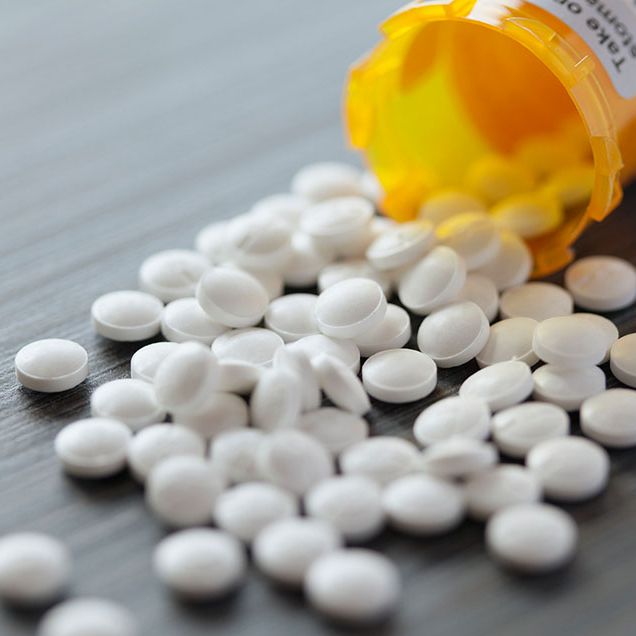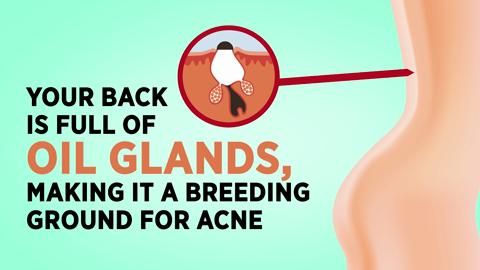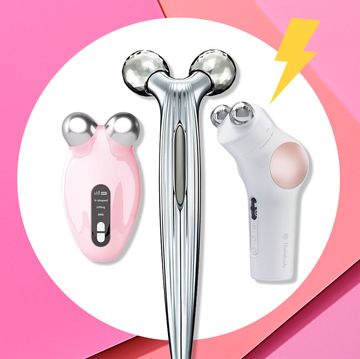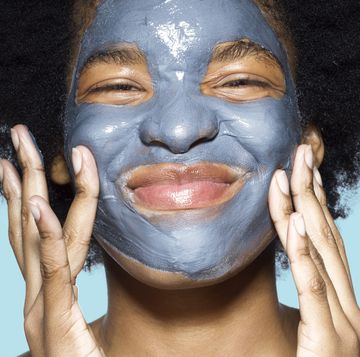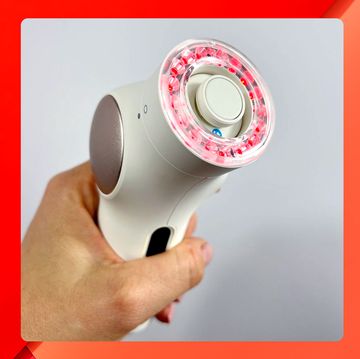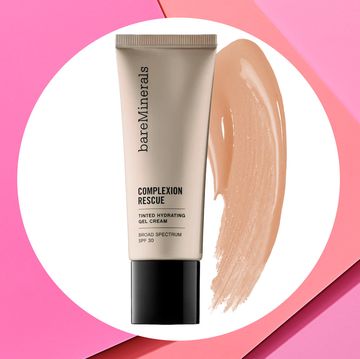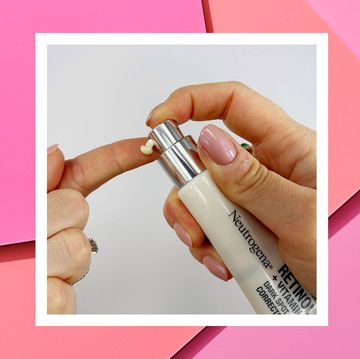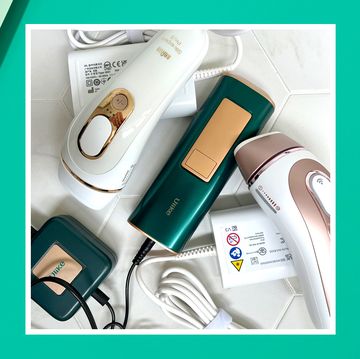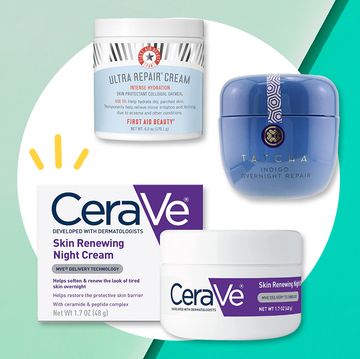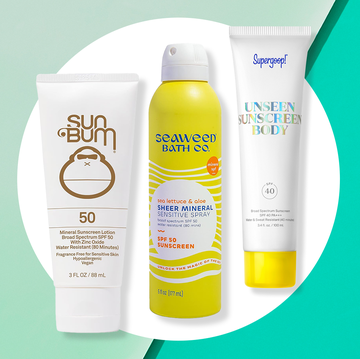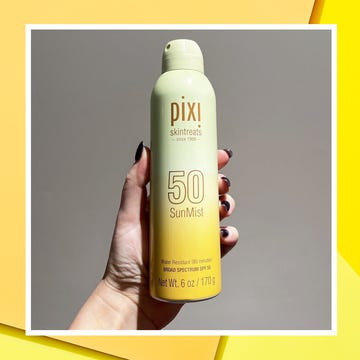I remember the first time I woke up with a pimple. I was 11 and, seemingly out of nowhere, this huge, red bump showed up on my chin. When I first saw it with sleepy, groggy eyes, I thought it was a bug bite—those I was used to, given my days were often filled with outdoor sports and adventuring around the neighborhood with my two brothers. But after I brushed my teeth and took a closer look, I saw a small white bump in the center. The only thought that came to my head: “Gross.”
I ran out of the bathroom to immediately find my mom, who took a look and definitively said, “That’s a zit. Say hello to your hormones.”
And that, my friends, was the beginning of a long, seemingly never-ending journey with acne.
I’ve tried everything over the years to fix my skin, but nothing has lasted long-term. That is, until I started getting acne-fighting facials. When I went to visit my dermatologist to find out more about laser and light therapy treatment, he also recommended I start taking one very special prescription medicine. “It’s called spironolactone, and it’s typically used for high blood pressure,” he told me. But he said that dermatologists use it "off-label" (aka it's not FDA-approved for this specific kind of treatment) because it's been shown to be very effective treating premenstrual acne in adult women.
RELATED: What's That On Your Face?
That's because spironolactone inhibits testosterone production (yes, women have both estrogen and testosterone!). The drug has anti-androgen properties, meaning it blocks the effect of some male hormones, like testosterone, from binding to receptors that can cause oil production in your glands. Women who have high hormone levels tend to see more breakouts on the lower face (slowly raises hand), and this can be an effective way to stop that from happening.
At 27 years old, I realized that I had been dealing with acne for 16 years. I was willing to give anything a shot. So I said yes, and he immediately told me I’d need blood work done before my prescription could be filled.
A blood test might seem excessive for an acne medication, but it’s because this drug has a few requirements. First, the blood work confirms that nothing abnormal is happening internally before treatment starts, says Julia Tzu, M.D., founder and medical director of Wall Street Dermatology. It also confirms that you’re not pregnant—women who are can’t take spironolactone, as it can cause fetal birth defects. (So it’s also required that anyone who takes the drug actively uses protection during sex.) And lastly, that first blood draw provides a baseline for future results—Tzu says practice varies among dermatologists, but she checks up on patients every three to six months because potassium levels could rise while on spironolactone. It’s not common in young, healthy women, she says, but if it does happen, the Mayo Clinic reports that high blood potassium can cause irregular heart rhythms that can, in severe cases, lead to death. So, it’s better to be safe than sorry.
Here's everything you need to know about adult acne:
Knowing all that, I still thought the meds could be worth it, so I filled my prescription—costs vary based on insurance, but it’s generally between $30 and $40 for a month’s worth, says Tzu — and gave it a whirl.
I didn’t see results right away—the medicine takes two to three months to kick in, so I needed to be patient. So in the short-term, I had the laser and light therapy facials working to unclog my pores and fight acne-causing bacteria. But the spironolactone was working behind the scenes to reduce my oil production, slowly but surely.
As with all medications, there are side effects to look out for, all of which are listed in the package insert when you get the prescription, says Tzu. “Patients can experience breast tenderness, menstrual irregularities, fatigue, and lightheadedness or dizziness,” she says. “[Still], most young, healthy women tolerate the drug well, with no significant side effects, at or below 100 mg. Side effects are more common with higher dosages.”
RELATED: Everyone On Instagram Is Obsessed With This Blackhead-Removing Technique
It’s also a diuretic—something I noticed within the first month or so of taking it, when I made trips to the bathroom a little more frequently than usual. It can also make your hair thicker, says Tzu, as it’s been shown to help with female pattern hair loss and decrease male pattern hair growth. I didn’t notice a difference with my already-thick hair, nor did I previously have problems with hair growth on my face, chest, or back, where male pattern hair growth tends to show up on women first, according to the Mayo Clinic. But it could be a nice bonus for anyone who needs it.
After three months of popping spironolactone on the reg—along with getting consistent facials and using over-the-counter acne-fighting products in my daily skin-care routine—I noticed a major change in my skin. Gone was the cystic acne that plagued my skin on a daily basis. Instead, I now have smooth and healthy skin that doesn’t make me feel forced into piling on layers of makeup. I still get flares of acne, but it’s usually only when my period is about to start, and it’s only two or three pimples over the course of a week. Before starting spironolactone, I was getting was two or three per day. So I’m pretty happy with my result. If anything, it means I don’t have to dart straight from a workout to the shower so no one sees me. Instead, I’ll give my face a quick rinse, then enjoy that muscle-building protein shake with friends.

Samantha Lefave is an experienced writer and editor covering fitness, health, and travel. She regularly interviews pro athletes, elite trainers, and nutrition experts at the top of their field; her work has appeared in Runner's World, Bicycling, Outside, Men's Health and Women's Health, Cosmopolitan, Glamour, and more.
